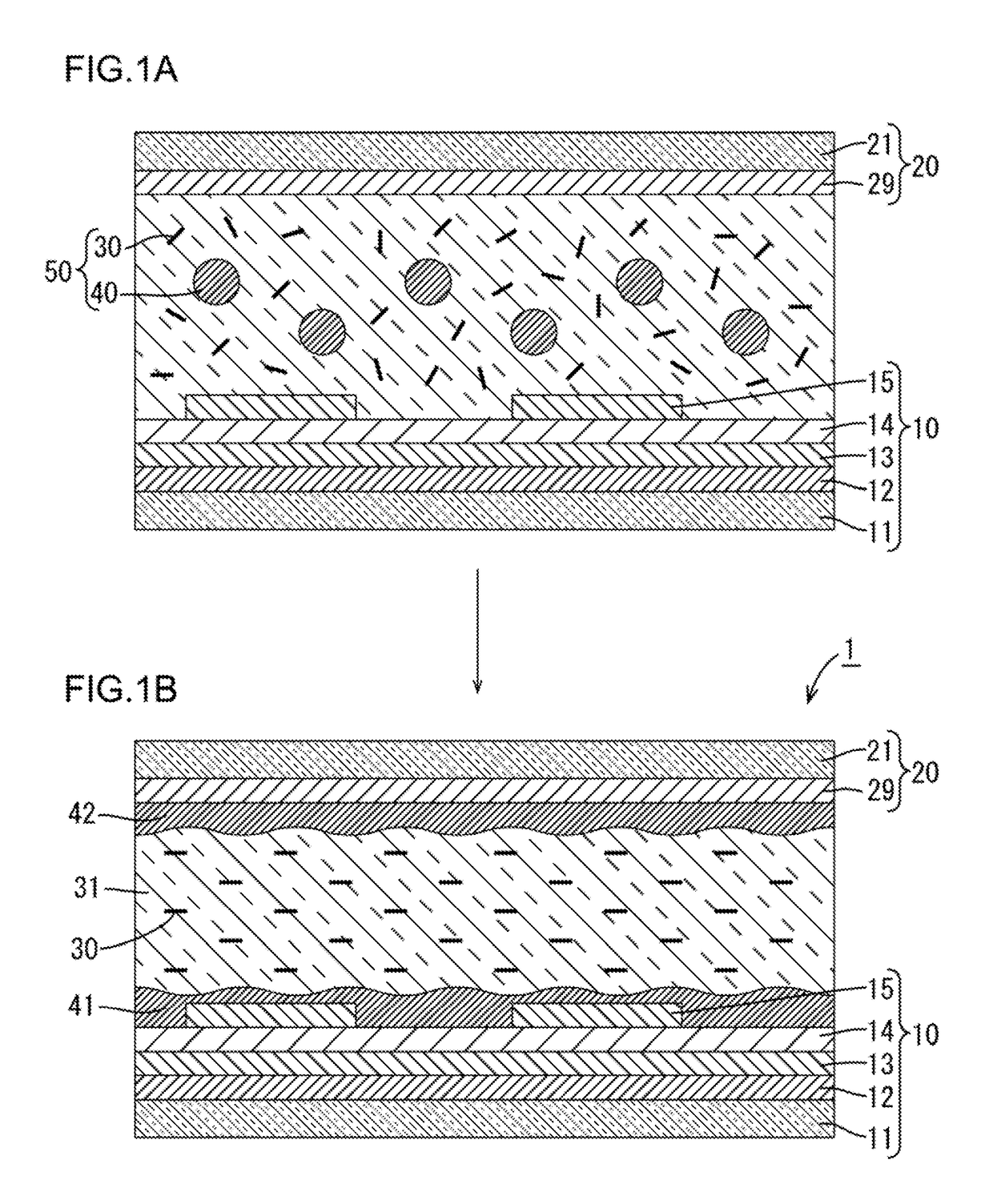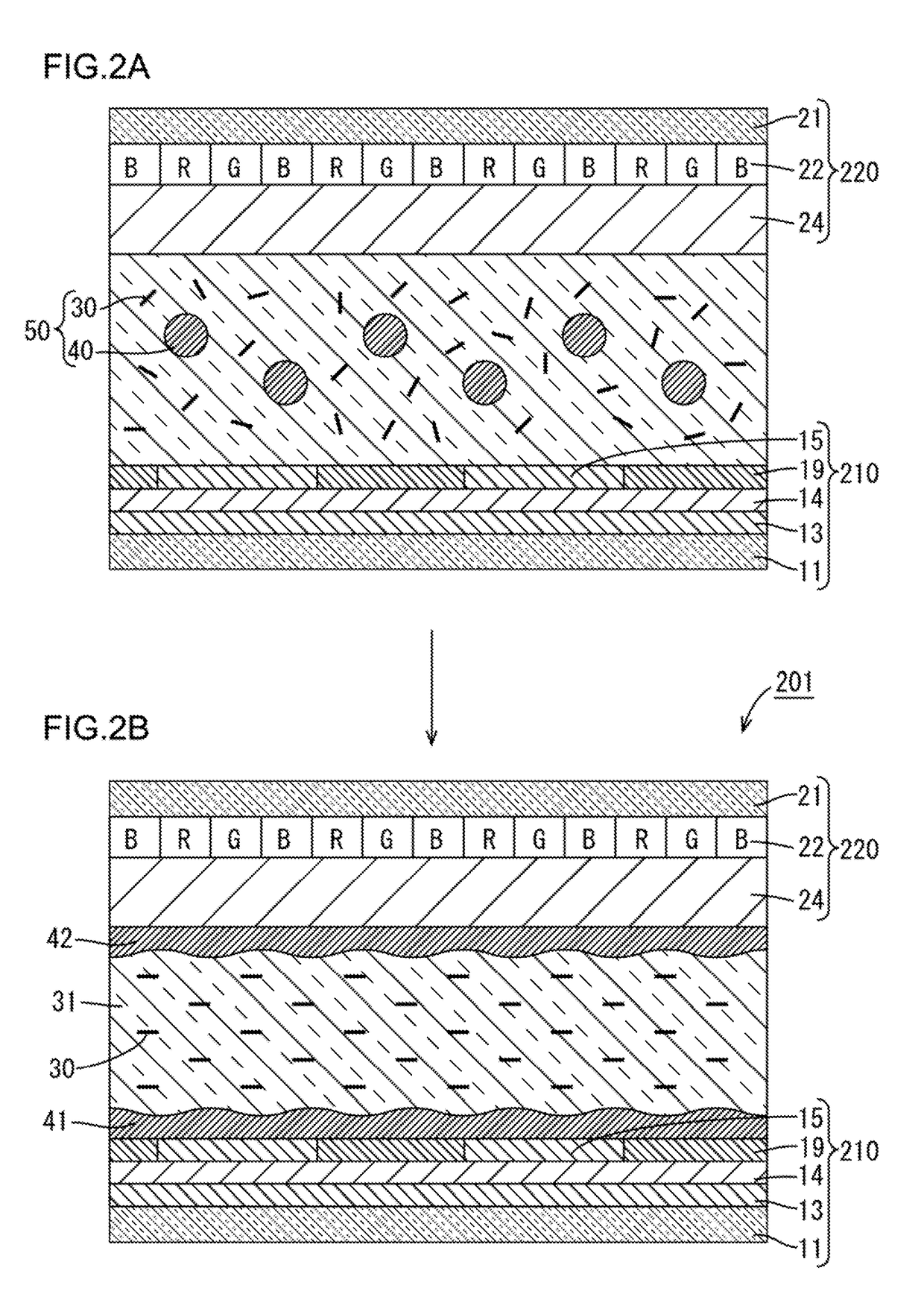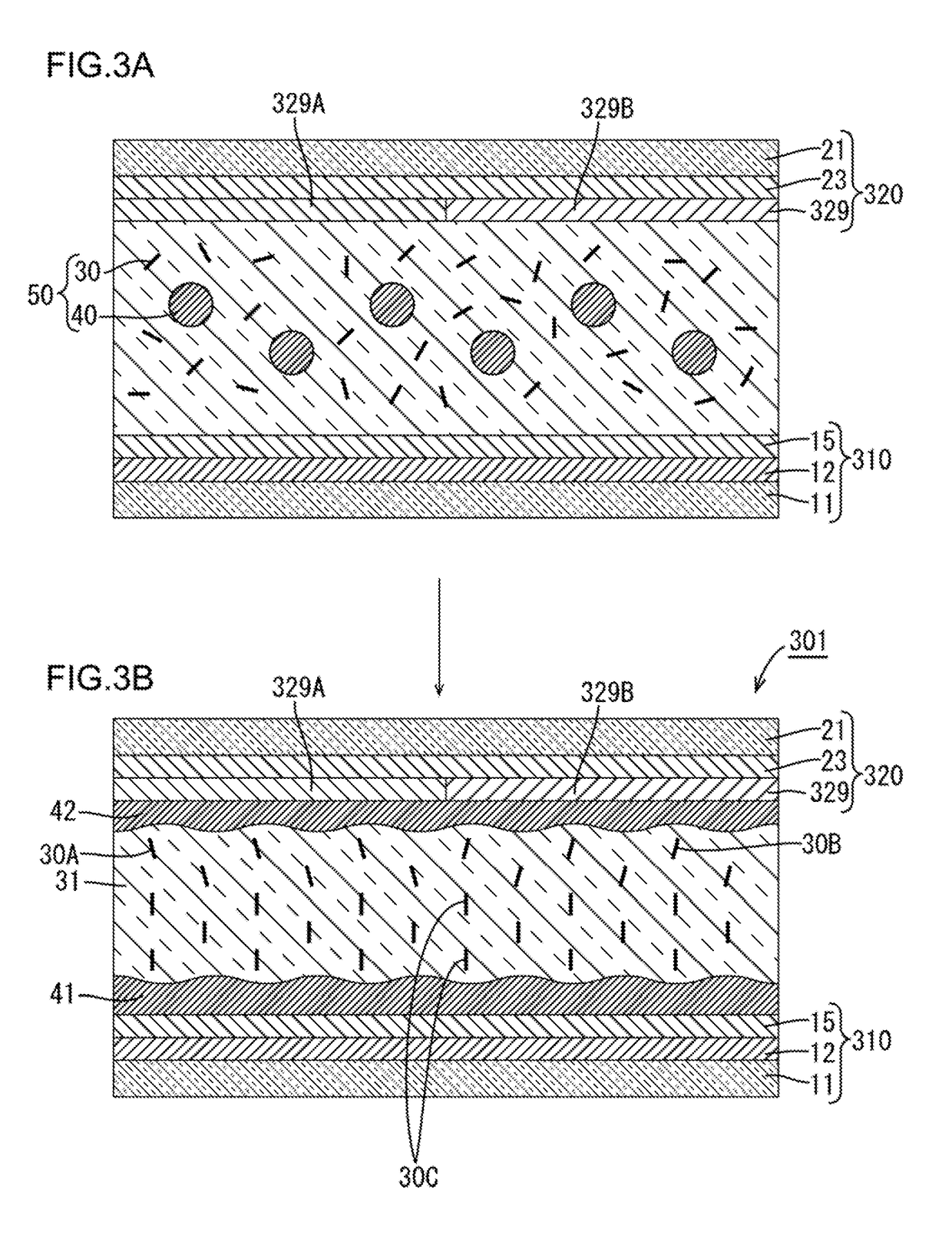Liquid crystal display and production method therefor
- Summary
- Abstract
- Description
- Claims
- Application Information
AI Technical Summary
Benefits of technology
Problems solved by technology
Method used
Image
Examples
first embodiment
isplay Including Array Substrate Having NQD-Containing Organic Insulating Film but Having No Alignment Film, and Counter Substrate Having Alignment Film
[0025]A first embodiment is explained using FIGS. 1A and 1B. The present first embodiment exemplifies a liquid crystal display including an array substrate 10 having an NQD-containing organic insulating film 12. In the present first embodiment, a counter substrate 20 has a conventional alignment film 29, while the array substrate 10 has no alignment film.
[0026][Liquid Crystal Display]
[0027]The liquid crystal display according to the present first embodiment can be used as a display or a monitor in a TV receiver, a personal computer, a tablet terminal, or a cell phone.
[0028]The liquid crystal display includes a panel-shaped liquid crystal cell 1. The liquid crystal display may be any type of a transmission type, a reflection type and the like. The transmission type further includes a subsurface illuminator (not shown), which is dispos...
second embodiment
splay Including Array Substrate Having Alignment Film and Counter Substrate Having Color Filter Layer and Intracellular Phase Difference Layer but Having No Alignment Film
[0080]A second embodiment is explained using FIGS. 2A and 2B. The present second embodiment exemplifies a liquid crystal display including a counter substrate 220 having a color filter layer 22 and an intracellular phase difference layer 24. In the present second embodiment, an array substrate 210 has a conventional alignment film 19, and the counter substrate 220 has no alignment film, unlike the first embodiment. Hereinafter, the same structures as those in the first embodiment are marked with the same numbers, and overlapped explanations are omitted (the same applies to the third embodiment and the fourth embodiment). FIG. 2B shows an IPS mode liquid crystal cell 201 in which a liquid crystal material 30 is horizontally aligned relative to the two substrates 210 and 220 in a liquid crystal layer 31.
[0081](Counte...
third embodiment
isplay Having Alignment Division Control Structure, Including Array Substrate Having NQD-Containing Organic Insulating Film but Having No Alignment Film, and Counter Substrate Having Alignment Film Configured to Control Pre-Tilt Angle of Liquid Crystal Material to Predetermined Range
[0096]A third embodiment is explained using FIGS. 3A and 3B. The present third embodiment is different from the first embodiment in that a pre-tilt angle having a predetermined range is imparted to a liquid crystal material on the side of a counter substrate 320 having a conventional alignment film 329, and the display has an alignment division control structure. In addition, in the first embodiment, the structure in which the pixel electrodes 15 and the common electrode 13 are formed in the array substrate 10 has been described, but in the present third embodiment, the common electrode is not formed in the array substrate 310, and a structure in which a counter electrode 23 is formed in the counter subs...
PUM
| Property | Measurement | Unit |
|---|---|---|
| Angle | aaaaa | aaaaa |
| Angle | aaaaa | aaaaa |
| Angle | aaaaa | aaaaa |
Abstract
Description
Claims
Application Information
 Login to View More
Login to View More - R&D
- Intellectual Property
- Life Sciences
- Materials
- Tech Scout
- Unparalleled Data Quality
- Higher Quality Content
- 60% Fewer Hallucinations
Browse by: Latest US Patents, China's latest patents, Technical Efficacy Thesaurus, Application Domain, Technology Topic, Popular Technical Reports.
© 2025 PatSnap. All rights reserved.Legal|Privacy policy|Modern Slavery Act Transparency Statement|Sitemap|About US| Contact US: help@patsnap.com



